Ep 33: How to break the rules – When questioning is the answer.
Podcast: Play in new window | Download
Subscribe: Apple Podcasts | RSS
Today we proudly bring you episode 33 staring one of our new co-hosts, mentor and teacher, 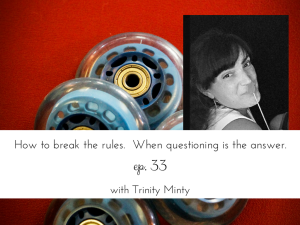 Trinity Minty. Even though we are technically one third of the way to 100 it somehow feels like this is still only our second episode. We’ve gotten so much wonderful feedback as a response to our new and improved production and to the additional elements, that I’m having that same giddy feeling as when we first launched.
Trinity Minty. Even though we are technically one third of the way to 100 it somehow feels like this is still only our second episode. We’ve gotten so much wonderful feedback as a response to our new and improved production and to the additional elements, that I’m having that same giddy feeling as when we first launched.
I’m particularly excited about today’s podcast because not only do we get to be a part of an interesting discussion that challenges the way we think about some of what teach — it’s all about questioning and not taking things at face value — , we’re also going to witness something that, for me, is truly tremendous, something that deeply reflects the why of what I do…
Heroes
As the co-host of today’s show, I asked Trinity to choose who or what she wanted to share with you in this section and her answer was so totally perfect, but not at all where my head was. Her answer was a group of courageous and sincere teachers that are taking big risks and making big changes. To hear Trinity talk about the teachers currently participating in the Skillful Teaching 28-Day Fulfilled & Successful Pilates Teacher online course:
Listen to the podcast at around minute 52:00.
Another hero I thought you’d all enjoy, which in some way totally plays into being able to seek out your own answers and be authentic, is infamous TED Talk presenter and social psychologist Amy Cuddy and her new book “Presence.”
“Presence” is straightforward and insightful, although not entirely astonishing if you’re a movement teacher. What I’ve loved most about the book is learning about the plethora of research that is proving how the state of our body informs and influences, changes even, our sense of self, security, power, confidence, and how in turn these things help us face our most challenging moments.
Here’s a short excerpt I thought might entice you:
“The way you carry yourself is a source of personal power — the kind of power that is the key to presence. It’s the key that allows you to unlock yourself — your abilities, your creativity, your courage, and even your generosity. It doesn’t give you skills or talents you don’t have; it helps you to share the ones you do have. It doesn’t make you smarter or better informed; it makes you more resilient and open. It doesn’t change who you are; it allows you to be who you are.”
Pro Tip
Because we wanted to encourage you to explore the idea of questioning after the show, our Pro Tip for this episode looks at how you might change your perspective on one of our most loved and loathed Pilates exercises…(of course you know what I’m talking about, I can practically hear you all saying it from here)…the 100!
Here are our suggestions:
From the starting position, lift and lengthen out reaching the arms long, collarbones wide. Begin pumping the arms, inhaling for a count of five, exhaling for a count of five. With your exhalation, can you curl up a little higher?
The above is a typical way you’d hear the 100s being taught.
What if we simply omitted the cue of reaching the arms and collarbones wide and instead focused on creating spinal flexion that is deeply supported from the back body, which has the potential to relieve some tension in the throat and shoulders and improve breath?
Something like:
When you begin to lengthen the legs out, soften the sternum downward and draw the ribs into the body, curling up from that initiation point. Allow the arms to lengthen and begin your pumps. The arm pumping works in a way that gets the circulation working.
What you may see when cueing with this focus is the ribs moving toward the back body in a way that lends to the appearance of the collarbones narrowing. However, how does the abdominal curl itself look? Does the spine look fully supported in flexion? For me, coming into spinal flexion from supine with a strong cueing of the arms long and collarbones wides, feel like I am working against myself.
Also consider starting the 100 not from supine, which requires so much more of the body and not always in a good way, and come into the position from sitting or balance point, then rolling back, gradually coming into the position with your shoulder blades and ribs completely off the mat (this is reminiscent of a more classical position for hundreds – in a deep imprint). Explore whether or not the flexed position feels more supported from the back of the hips, legs, and spinal extensors and whether or not you still feel like you’re hanging off the front body, the neck especially, in an effort to fight the tireless pull of gravity?
Our experience is that this way of working into the 100 helps people find greater joy and value in the exercise and motivates them to work at it.
We’d absolutely love to hear what you think about this.
Links and Resources
- 3 Most Dangerous Cues webinar:
- Fearless Teaching article
- Trinity’s blog post called Discernment and Integration
- Thinking Pilates Podcast Ep. 26: From mimicry to original thought…How does it happen?
- Thinking Pilates Podcast Ep. 27: When change hits the fan…discerning in the big picture.
Connect With Us
- Email us at thinkingpilatespodcast@gmail.com or use the form below.
- Find us on Facebook at The Thinking Pilates Podcast
Reach us Individually
- Chantill – chantill@skillfulteaching.com
- Phone – (707) 738-7951
- Debora – dkolwey@gmail.com

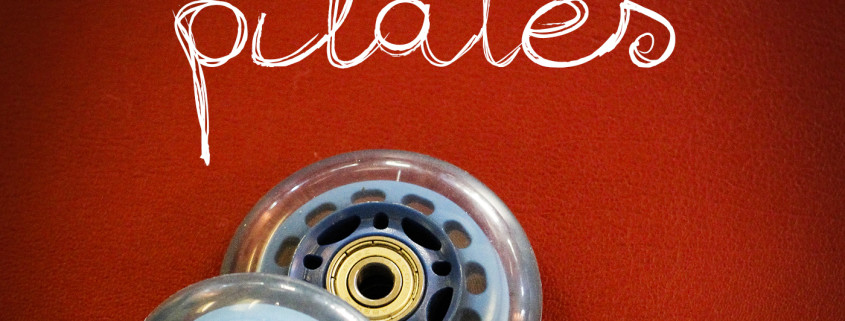
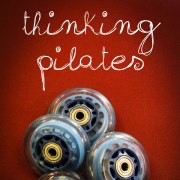
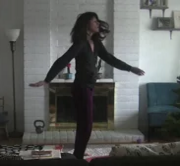
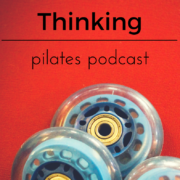
 How are you showing up? Why are you showing up? Why do you teach? What IS teaching? Why do you care? This is Skillful Teaching: A Whole-person approach to being an expert teacher, not an expert technician. There's a difference. Want to know what it is?
How are you showing up? Why are you showing up? Why do you teach? What IS teaching? Why do you care? This is Skillful Teaching: A Whole-person approach to being an expert teacher, not an expert technician. There's a difference. Want to know what it is?

Leave a Reply
Want to join the discussion?Feel free to contribute!